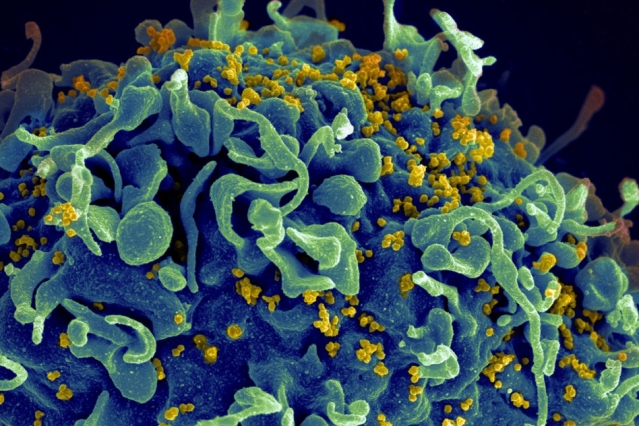Researchers from the University of Montreal Hospital Research Center (CRCHUM) have identified cells that provide “safe houses” for the human immunodeficiency virus (HIV) during antiretroviral therapy (ART).
“We have found cell markers to target HIV reservoirs. This discovery has opened new treatment perspectives to eliminate these reservoirs and perhaps one day cure people infected with the virus,” said Nicolas Chomont, CRCHUM researcher and principal investigator of a study to be published July 14 in the journal PLOS Pathogens.
ART prevents progression of the infection to acquired immunodeficiency syndrome (AIDS). However, the virus persists in a small pool of cells called “reservoirs” during ART. “Antiretroviral drugs work well. Generally, viral loads fall to undetectable levels in hospital blood tests. The problem is that if the person stops ART, the virus returns quickly, because it was hidden in these pools. The goal of my laboratory is to identify the cells in which the virus hides and eliminate them. If we succeed, then infected people may eventually be able to safely stop ART, which is not without its side effects,” said Chomont, also professor at University of Montreal.
HIV needs to be “housed” in a cell, a safe haven, so to speak, to live and replicate. It usually lives in CD4+ T lymphocytes, a type of white blood cell whose role is to activate the body’s defence against infections. But finding an HIV pool is like looking for a needle in a haystack. Within the large population of CD4+ T lymphocytes, there is only one cell pool in a million cells.
Chomont’s team has demonstrated that cells that harbour the virus have common immunological characteristics. Rémi Fromentin, a research associate at the CRCHUM, has identified three cell markers that typify these pools. The proteins, called PD-1, LAG-3, and TIGIT, are expressed at the surface of cells that harbour the persistent virus. “Using the house analogy, PD-1, LAG-3, and TIGIT are the chimney, door, and fence, for example. The goal is to destroy all the houses that have these characteristics, in order to eliminate the virus,” said Chomont.
“This discovery is important because, until now, no combination of markers has had the potential for therapeutic treatment against HIV pools. The advantage is that anticancer drugs that specifically target these markers already exist. We believe we could use the same drugs to destroy HIV reservoirs,” said Fromentin.
The researchers will test antibodies in the laboratory that specifically bind to these markers. Since some of the drugs, known as immunomodulators, are already approved by the U.S. Food and Drug Administration and Health Canada, their use could be transferred relatively quickly to clinical practice. Along with this promising application, Chomont and Fromentin continue their work in refining their knowledge about these “safe houses” for HIV pools. The goal is to aim as accurately as possible by destroying the “right houses” and therefore all the cells that harbour HIV despite ART.
Story Source:
The above post is reprinted from materials provided by University of Montreal Hospital Research Centre (CRCHUM). Note: Content may be edited for style and length.
